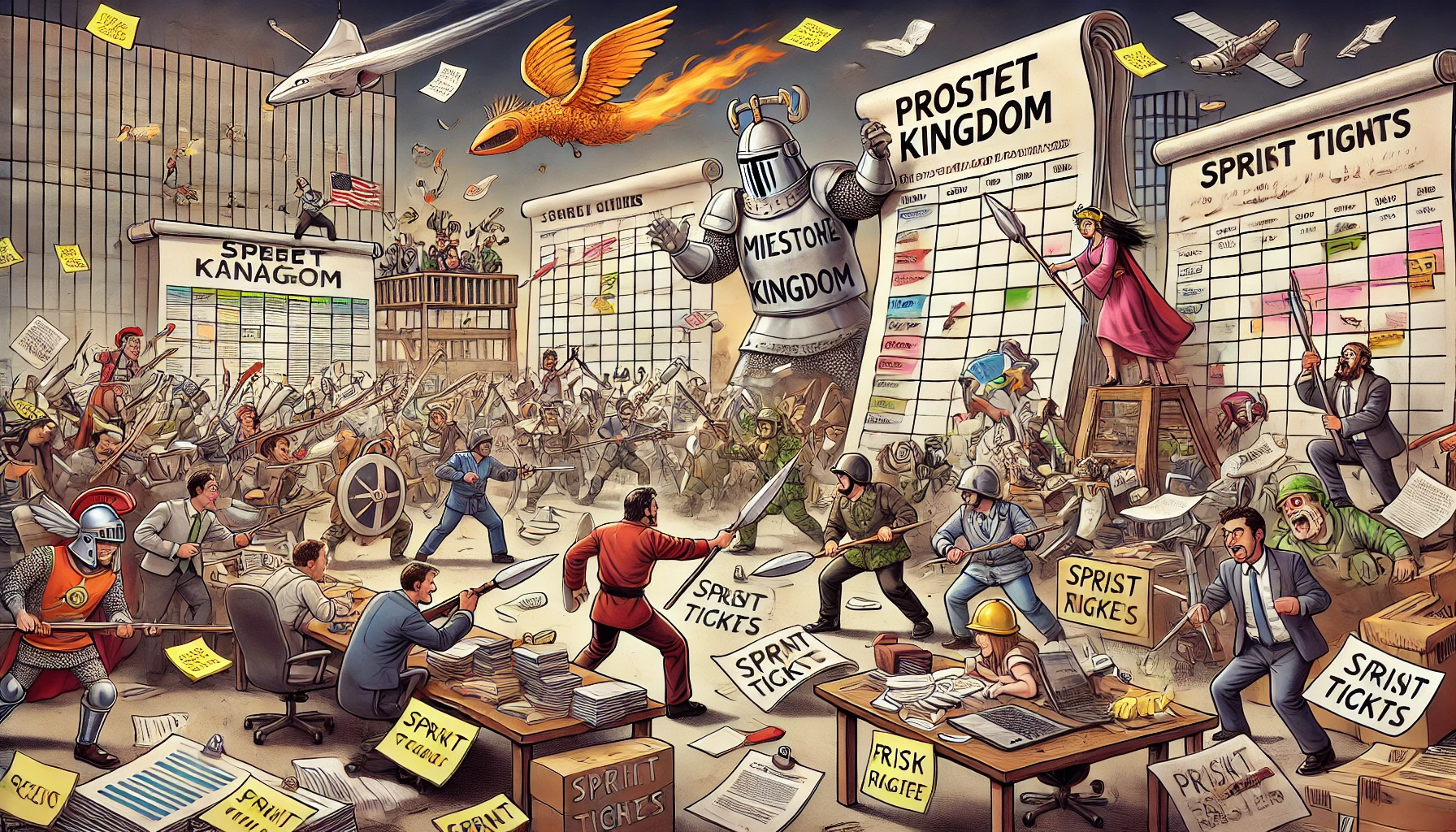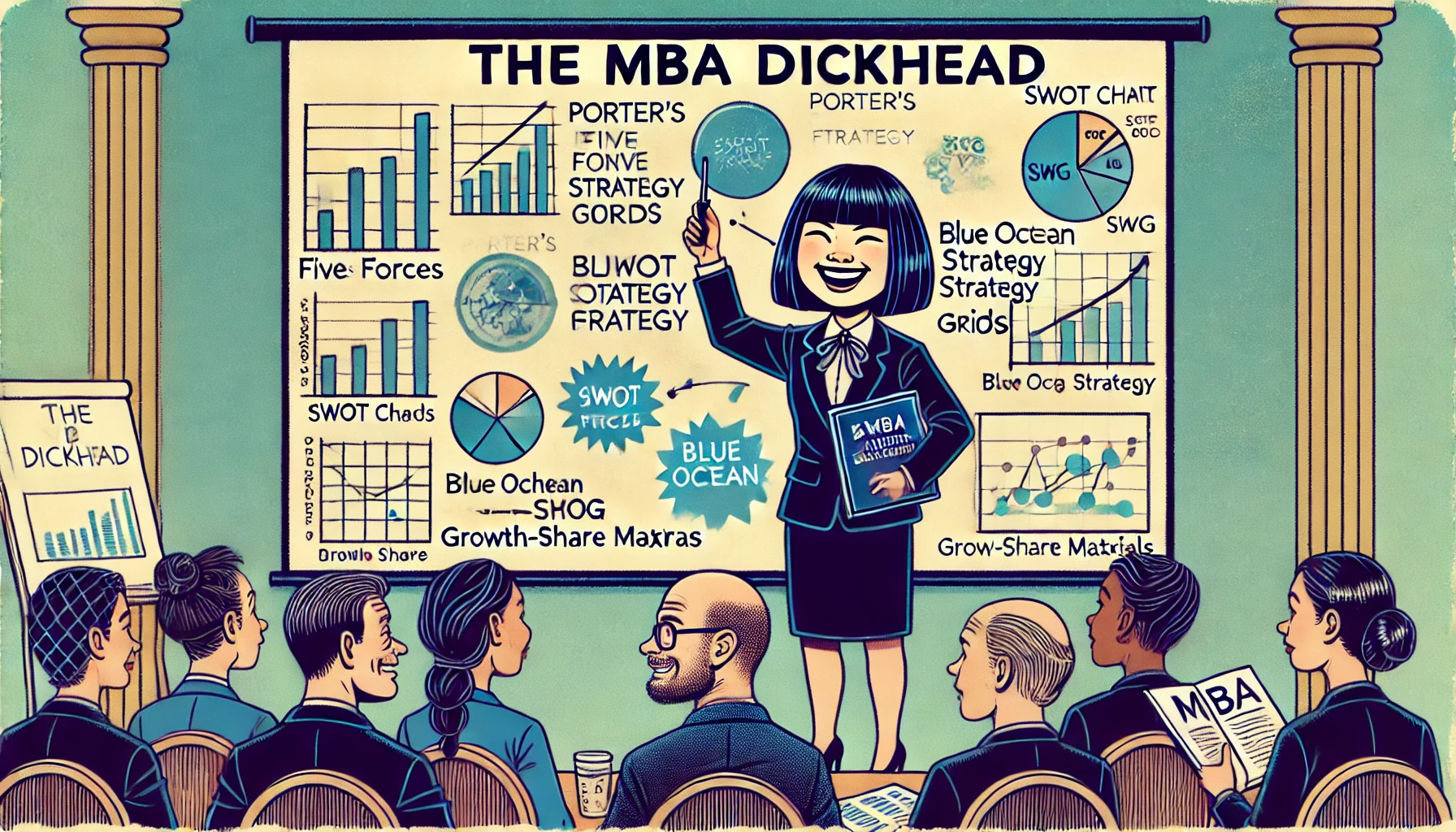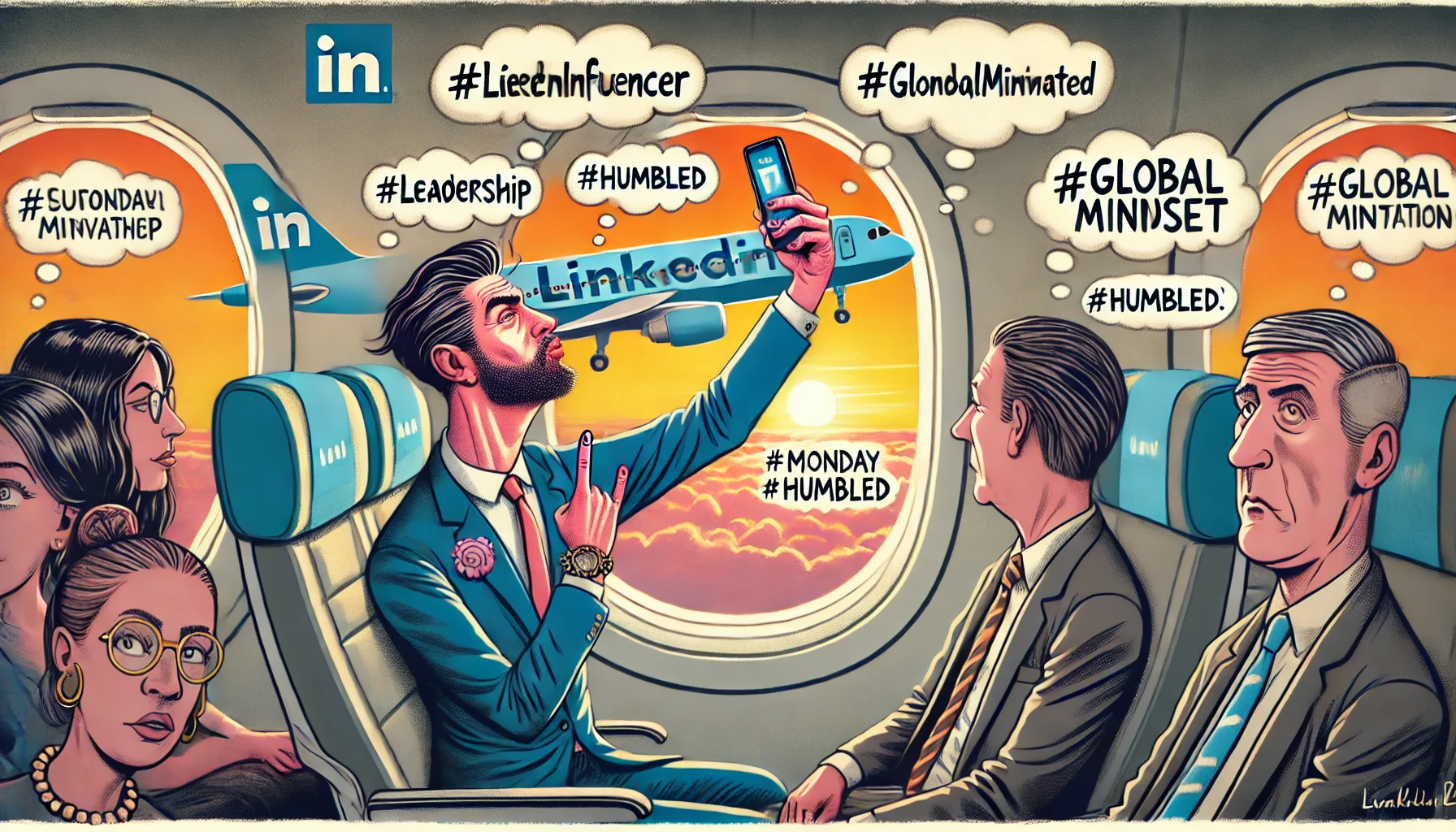The Boardroom Battlefield
Opening Battle Scene
It was a time of open-plan strife and partitioned cubicle trenches. Inside the corporate headquarters, a once-ordinary office building had devolved into an all-out war zone. Two warring factions, equal parts professional and absurd, squared off beneath fluorescent skies: the Project Management Warriors (champions of Waterfall, Milestones, and Critical Path) versus the Product Management Crusaders (defenders of Agile, Sprints, and Backlogs). Their differences were irreconcilable and their battle lines were drawn right through the middle of the boardroom.
In that boardroom-turned-battlefield, ergonomic chairs lay toppled as makeshift barricades. The long conference table had been flipped onto its side, serving as cover from incoming fire – not bullets, but balled-up project plans and Nerf darts labeled “Action Items.” The air smelled of burnt coffee and dry-erase marker fumes, a haze of war hanging low. Overhead, the projector flickered like an ancient signal fire, casting the shadow of a giant Gantt chart across the room. Under that ominous glow, the two sides glared daggers at each other, ready for corporate combat.
Key Characters & Tactics
At the helm of the Waterfall side stood Milestone Mike, the self-appointed Project Dickhead General. He brandished a giant rolled-up Gantt chart as if it were a royal decree – or a broadsword. Mike’s armor was an outdated but impenetrable Project Plan, layer upon layer of scope documents and risk registers forming a breastplate of bureaucracy. With every step, he slammed down a thick binder like a shield, shouting orders about “critical paths” and “phase-gate deliverables.” His battle tactics were all about grand strategy: twelve-month campaign plans drawn in meticulous detail, every task and dependency plotted as if penned by a prophetic oracle. To Mike, deviation from the Plan was treason, and deadlines were sacred oaths.
Opposite him, rallying the Agile troops, was Sprint Sally, the fearless Product Dickhead Commander leading the Product Management crusaders. Where Mike had a Gantt broadsword, Sally was armed with an arsenal of Post-it note grenadesand a Nerf gun labeled “Rapid Iteration.” She wore a war vest plastered with sticky notes in bright colors – badges of honor from past sprints. Instead of heavy armor, Sally moved light and fast; her gear was a laptop emblazoned with SCRUM stickers and a Kanban board shield strapped to her arm. In the chaos of battle, she would lob neon Post-it grenades that exploded into sudden scope changes and fresh requirements, sowing confusion in the Waterfall ranks. Sally’s strategy was fluid and adaptive: she led her Agile warriors in two-week battle cycles, pausing after each to regroup and retrospect on what tactics to change for the next skirmish. To her, a plan was only as good as its ability to pivot when reality inevitably laughed at it.
Between the generals swarmed their troops. Project Management foot soldiers – the Waterfall Warriors – advanced in formation, each clutching printouts of timelines and status reports like they were battle standards. They marched in lockstep to the rhythm of a ticking project clock, chanting slogans like “On Scope, On Schedule, On Budget!” Meanwhile, the Agile insurgents darted around them in a flurry of stand-up meetings, moving sticky notes across boards as if maneuvering battalions on a map. Their war cries were things like “Increase velocity!” and “Embrace change!” – baffling to their enemies. It was old-school command and control versus new-school iteration and collaboration, rigid hierarchy versus guerrilla teamwork.
The Conflict
The first clash came swiftly and ridiculously. Milestone Mike, atop the flipped conference table, unveiled the Gantt Chart Trebuchet – a makeshift catapult crafted from a whiteboard easel and rubber bands, loaded with heavy rolls of printed timelines. With a roar of “By the Power of Planning!” he let fly a volley of thick paper project charts arcing through the air. The Waterfall Warriors cheered as the rolled-up schedules sailed like boulders toward the Agile side.
But Sprint Sally was prepared. “Kanban shields up!” she cried. Her front-line crusaders raised their Kanban board shields – whiteboards covered in sticky notes, held firm against the incoming Gantt bombardment. The timeline scrolls hit with dull thuds, scattering pages of milestones and dependencies everywhere. Agile troops whooped as they caught some of the flying pages, immediately tearing them up to use as confetti for victory dances. The Trebuchet’s assault had been foiled by sheer adaptability and a wall of neon paper.
Angered by the failure of the first salvo, the Project faction switched tactics to Stakeholder Siege Warfare. From the back lines, a brigade of executives (the self-proclaimed Stakeholder Supreme Alliance) rolled in on high-backed swivel chairs as if they were siege towers. These executives demanded status updates in booming voices, hurling down memos like flaming arrows inscribed with Action Items: “We need fixed timelines and guaranteed deliverables!” The pressure of their gaze was like catapult fire raining from above. Under this onslaught, the Project Management Warriors redoubled their resolve, yelling back, “Yes, sir! The deadline shall be met, come hell or high water!”
On the other side, Agile crusaders held their ground and their ears. They shouted in defiance: “Respect the backlog!” Whenever a stakeholder demand landed in their midst (often in the form of an email printout taped to a stress ball), the Agile team would scramble to convert it into a user story and toss it onto the backlog pile with a collective cackle. Their Product Dickhead officers, led by Sally, insisted that no stakeholder decree could breach the sanctity of their sprint until the next planning session. This only made the executives red-faced and more determined, escalating the siege with back-to-back meeting invites and calendar bombardments marked URGENT.
Caught between the siege engines of upper management and the trenches of methodology were daily rituals now turned chaotic. Stand-up Meetings in No Man’s Land became a bizarre daily ceasefire. Each morning at 9:00 AM sharp, a tentative truce was called so combatants from both sides could trudge to the middle of the battlefield (right where the carpet still bore the coffee stains of yesterday’s skirmish) and form a wary circle. There, under the cross-eyed watch of both Mike and Sally, exhausted engineers from both camps stood at attention. In theory, they were to report progress. In practice, it felt like prisoners exchanging pledges under duress.
One beleaguered engineer, clutching a laptop like a shield, spoke up tremulously: “Y-yesterday I coded the module as per the spec… um, today I plan to test it…” Immediately, one of Mike’s lieutenants snarled, “Is it on track with the project plan? What’s the percentage complete?!” The engineer winced and began to stutter, eyes darting for an escape. Sprint Sally jumped in, giving a reassuring nod: “And what’s your blocker? Remember, focus on our velocity!” The poor soul in the middle looked like a soldier being pulled in two directions by rival warlords. These stand-ups in no man’s land usually ended with the engineers scurrying back to their desks more confused than ever, as the ceasefire shattered by the next volley of arguments the moment someone muttered, “Alright, back to work… I mean, battle… everyone!”
The Confused Engineers
In the trenches (formerly known as the open-office floor), the everyday engineers and developers huddled behind monitors and stacks of printouts as improvised cover. They were the true casualties of this ideological war – folks just trying to build things while corporate artillery flew over their heads. To them, the two warring philosophies were less like guiding lights and more like incoming mortars of contradictory demands.
One moment, a Waterfall Warrior officer would slam a detailed requirements document onto a developer’s desk – a tome so thick it made the company handbook look like light reading – and bellow, “Follow the plan, no deviations!” The wide-eyed developer would nod meekly, already feeling the weight of a thousand predetermined tasks on their shoulders. But not ten minutes later, an Agile insurgent from Sally’s squad would appear, chucking a fresh stack of Jira tickets like ninja stars, grinning, “Surprise change request! We’re pivoting this sprint, hope you don’t mind!” The engineer, now cowering under his standing desk, could only let out a faint whimper. The doctrines of “velocity” versus “critical path” whizzed by like bullets over their head. All they really wanted was some peace and quiet to write code that actually worked.
These confused engineers developed survival tactics of their own. Many took to wearing noise-cancelling headphones – not just to concentrate, but as makeshift helmets against the constant barrage of buzzwords. A few even dug virtual foxholes in the company Slack, hiding out in far-flung channels (#random, #cat-memes) to escape the attention of both Project and Product commanders. If you listened carefully, between the explosions of egos and the crossfire of emails, you could hear the engineers’ quiet, unified battle cry: a plaintive sigh and the murmured words, “Please… just let us work.”
The Climax
After countless skirmishes, the war built to a climactic showdown one fateful afternoon. A critical initiative – part product launch, part project deadline – loomed on the horizon, and both factions claimed ultimate authority over its delivery. The atmosphere in the boardroom was electric (and not just from all the laptops overheating). At high noon (or perhaps just 2:00 PM, after a marathon of status meetings), Milestone Mike and Sprint Sally stepped forward into the cleared center of the boardroom, face-to-face amid the ruins of coffee cups and crumpled sticky notes. Their respective armies fell silent, forming a circle of anxious spectators. It was time for an epic duel to decide who “owned” the outcome once and for all.
Mike struck first. With a dramatic flourish, he unfurled his enormous Gantt chart scroll – its edges reinforced with brass bindings – and swung it downward like a greatsword. “I have the timeline!” he roared, as the weighty paper nearly took out a hanging ceiling tile on its path toward Sally. She narrowly sidestepped the blow, retaliating by pulling the pin on one of her trusty Post-it grenades. Poof! It burst between them in a shower of neon shrapnel, a cloud of colored paper that momentarily blinded Mike and left sticky notes plastered all over his face and neatly pressed suit.
“Your timeline means nothing if the requirements are wrong!” Sally shouted, seizing the moment as Mike staggered. She drew her secondary weapon: a burndown chart printed on a stiff frisbee, and flung it Captain America–style toward Mike’s chest. It whizzed through the air, aiming straight for his heart (or at least his ego). Mike barely managed to deflect it by grabbing a presentation pointer – the trusty laser he’d used in many a slideshow – and wielding it like a rapier. “Stay on scope, you agile anarchist!” he bellowed, swatting away the incoming frisbee with the pointer and then batting aside a flurry of index cards that Sally hurled as a follow-up (each card conveniently labeled with a user story, of course).
The duel raged on in comically dramatic fashion. Kanban boards were lifted like battering rams and Gantt charts repurposed as shields as they circled each other. At one point, Mike heaved a massive, leather-bound Project Charter across the room; Sally countered by tipping over a wheeled Scrum board to block it with a loud clang. The two combatants were evenly matched in stubbornness and ferocity. Spectators gasped as Mike’s three-ring binder shield met Sally’s MacBook Air with a resounding thud – the clash of old-school and new-school echoing through the halls. They locked eyes fiercely, both refusing to yield. It was tradition versus innovation, process-heavy pomp versus free-form agility – a corporate gladiator match with no clear victor.
Finally, in a last-ditch gambit, both leaders saw a chance to end the stalemate. They turned simultaneously toward the center of the room where a single prize lay on a pedestal of stacked office supplies: the project deliverable itself, embodied in a shiny USB flash drive containing the latest product build. With a mutual howl, Mike and Sally charged toward it at full speed. “For the Schedule!” Mike cried. “For the Sprint!” Sally yelled. They collided with spectacular force – a tangle of blazer, hoodie, flying papers and rolling office chairs – meeting in a crash that sent both of them and the pedestal sprawling. Supplies went airborne in an explosion of binder clips and highlighters. When the dust (and toner cartridge powder) settled, both generals were on the ground, each gripping one end of the flash drive tightly, neither willing to let go. The room fell silent, save for the soft hum of a neglected conference phone and the gentle flutter of a lone sticky note drifting down from the ceiling.
The Aftermath
The boardroom was a scene of carnage… albeit the hilarious, corporate kind. Monitors flickered amid the haze of dry-erase dust. Papers and sticky notes blanketed the floor like war-torn confetti. The once-imposing conference table lay askew, peppered with dents from the battle. In the center of it all, Milestone Mike and Sprint Sally still sprawled on the carpet, catching their breath in mutual disbelief. The flash drive – the precious deliverable – had popped free in the collision and now rested a few feet away, glinting under the fluorescent lights. A neutral party – the ever-unflappable IT guy in quietly heroic fashion – tiptoed in, snatched the flash drive from the battlefield, and hurried off to actually deploy the product while the combatants were too dazed to protest.
With their leaders literally floored, the two factions finally lowered their weapons (and office supplies). A weary ceasefire was declared as Project and Product teams alike surveyed the damage. Thus commenced the peace talks at the water cooler (under a white flag hastily fashioned from a coffee-stained printout of the Agile Manifesto). Representatives from each side convened – some sporting Band-Aids where paper cuts had felled them – and negotiated an uneasy truce. They drafted a tentative Post-Mortem Peace Treaty, agreeing to “consider hybrid approaches” in the future and promising, at least on paper, to share ownership of delivery. The signing ceremony was tense; pens were gripped like daggers even as signatures were scribbled. Both sides celebrated this so-called victory with a round of decaf coffee and half-hearted applause, but everyone knew this peace was as fragile as a house of index cards.
As the office lights dimmed that evening, an exhausted calm settled over the open floor. Engineers emerged cautiously from under their desks, hopeful that maybe – just maybe – they could get a solid night’s work done now. Mike dusted off his suit jacket, muttering about “we’ll get them in the next phase” under his breath, while Sally straightened her kanban-covered hoodie and mused about “next sprint’s strategy.” The war was over… or was it?
In truth, everyone knew the war would never truly end. As long as there were ambitious roadmaps and immovable deadlines that never quite align with reality, there would always be another battle brewing in the halls of corporate power. And so, the legend of the Boardroom Battlefield lives on, whispered around the water cooler – a tale of Product vs. Project, Agile vs. Waterfall, locked in an endless struggle for the soul of the corporate world, equal parts ridiculous, dramatic, and absurdly true to life.



